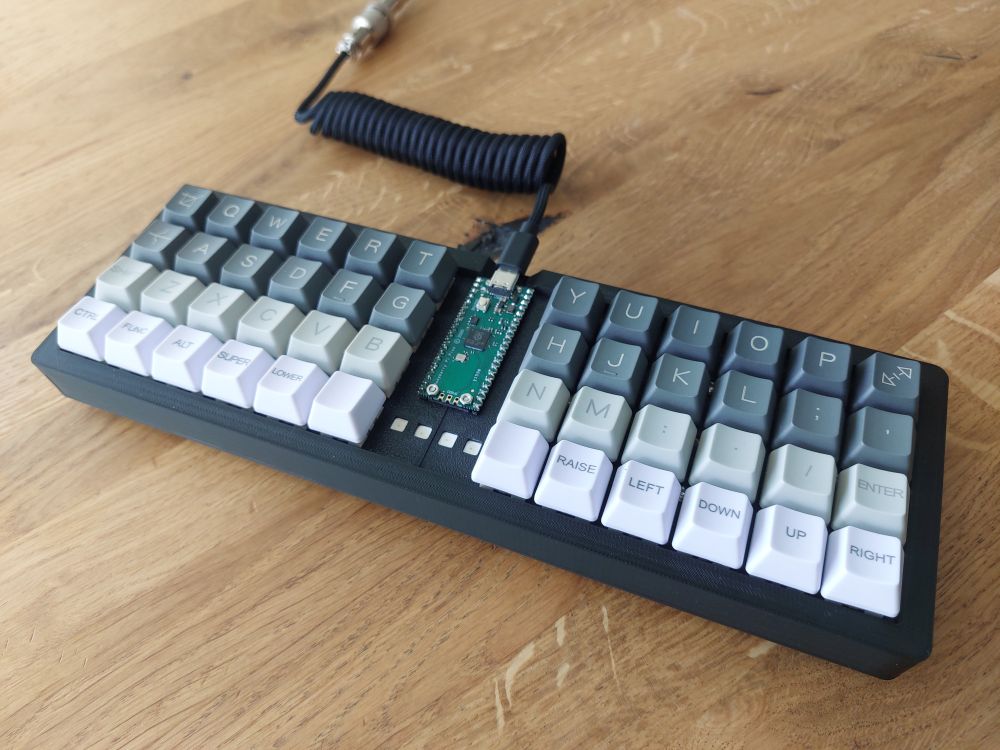Firmware Engineer
Father x2
(he/him) 🇬🇧🇳🇱


Hand-wired with 48 keys, 4 RGB LEDs, runs QMK + Vial on a raspberry pi pico.
It only took me about a day to get used to it, which was a surprise considering it's my first ortholinear!


Hand-wired with 48 keys, 4 RGB LEDs, runs QMK + Vial on a raspberry pi pico.
It only took me about a day to get used to it, which was a surprise considering it's my first ortholinear!


A switch that maps my keyboard to either my Linux or Windows machine.
It's literally just a SP4T switch, a couple of sliced up USB cables, and a cap across the power supply.
The cap keeps remap settings when switching between computers.


A switch that maps my keyboard to either my Linux or Windows machine.
It's literally just a SP4T switch, a couple of sliced up USB cables, and a cap across the power supply.
The cap keeps remap settings when switching between computers.
Define a .noinit section in RAM in the linkerscript with (NOLOAD), and then define an uninitialised array of u32s. Sum these up and use them to seed the RNG at boot time, when RAM will contain garbage.
![#define ENTROPY_POOL_SIZE (32)
__attribute__((section(".noinit")))
static u32 ram_entropy_pool[ENTROPY_POOL_SIZE];
static void init_xorshift(void) {
u32 seed = 0;
for (u32 i = 0; i < ENTROPY_POOL_SIZE; i++) {
seed += ram_entropy_pool[i];
}
xorshift32_seed(seed);
for (u32 i = 0; i < ENTROPY_POOL_SIZE; i++) {
ram_entropy_pool[i] = xorshift32_get();
}
}](https://cdn.bsky.app/img/feed_thumbnail/plain/did:plc:ds2b7nwnxnl6ru2q7a4pa5va/bafkreifv4tbvvkiguzigpfngkb7ctlcxf4vp5gsv7tsqiwdkodij3nny4q@jpeg)

Define a .noinit section in RAM in the linkerscript with (NOLOAD), and then define an uninitialised array of u32s. Sum these up and use them to seed the RNG at boot time, when RAM will contain garbage.

My second post about building a networking stack on a microcontoller just dropped.
It covers the packet flow architecture in the firmware, the DHCP process, and a little debugging for flavour
github.com/francisrstok...

My second post about building a networking stack on a microcontoller just dropped.
It covers the packet flow architecture in the firmware, the DHCP process, and a little debugging for flavour
github.com/francisrstok...







